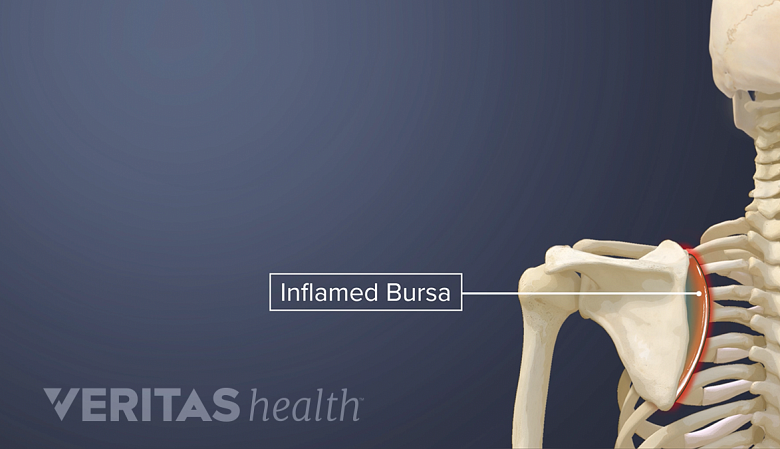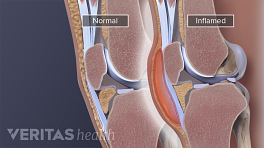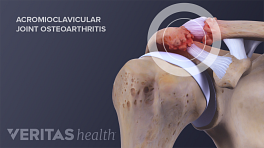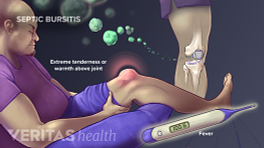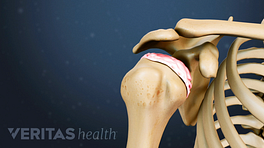Pain on the outer side of the shoulder is the most common symptom of shoulder bursitis.
The most common symptom of shoulder bursitis is pain on the outer part of the shoulder.
Typically, people with shoulder bursitis have some combination of the 8 symptoms listed below.
In This Article:
- Shoulder pain
Early in the course of bursitis development, patients may feel mild shoulder pain when lifting the arms overhead. This pain may gradually increase over time and eventually pain may be felt even at rest. - Pain that is worse after repetitive activity
The pain may intensify after prolonged repetitive shoulder movements, such as painting, throwing a ball, or playing tennis.Pain that gets worse after inactivity may be a symptom of:
- Shoulder tenderness
The outer shoulder may be tender and sensitive to pressure. Lying down or putting pressure on the affected side is often uncomfortable. - Radiating pain
Initially, the pain is located at the outside of the shoulder at the very top of the arm, but as symptoms progress, the pain may radiate down the outside of the arm (though rarely past the elbow). - Muscle weakness
As the condition gets worse, a person may avoid using the shoulder, causing the muscles to weaken.
- Pain at extreme range of motion
As symptoms progress it may become difficult to reach behind the back to put on a coat or zip a dress. - No swelling
Notable swelling, such as that seen in elbow or knee bursitis, is possible but often absent. Research suggests affected shoulder bursae thicken just 0.5 mm. 1 Tsai YH, Huang TJ, Hsu WH, Huang KC, Li YY, Peng KT, Hsu RW. Detection of subacromial bursa thickening by sonography in shoulder impingement syndrome . Chang Gung Med J. 2007 Mar-Apr;30(2):135-41. PubMed PMID: 17596002. - Fever, tiredness, and skin redness and warmth
People with septic shoulder bursitis, in which the bursa is infected, will experience the symptoms listed above and may also feel feverish, tired, and sick. They may also notice warmth and redness at the shoulder. Septic shoulder bursitis is serious and requires treatment with antibiotics to prevent the spread of infection into the bloodstream.See Septic Bursitis
In the absence of a trauma to the shoulder, bursitis symptoms typically have a gradual onset. If symptoms appear suddenly and without a clear cause (such as a fall or overuse) a call to a health care provider is advisable.
- 1 Tsai YH, Huang TJ, Hsu WH, Huang KC, Li YY, Peng KT, Hsu RW. Detection of subacromial bursa thickening by sonography in shoulder impingement syndrome . Chang Gung Med J. 2007 Mar-Apr;30(2):135-41. PubMed PMID: 17596002.
